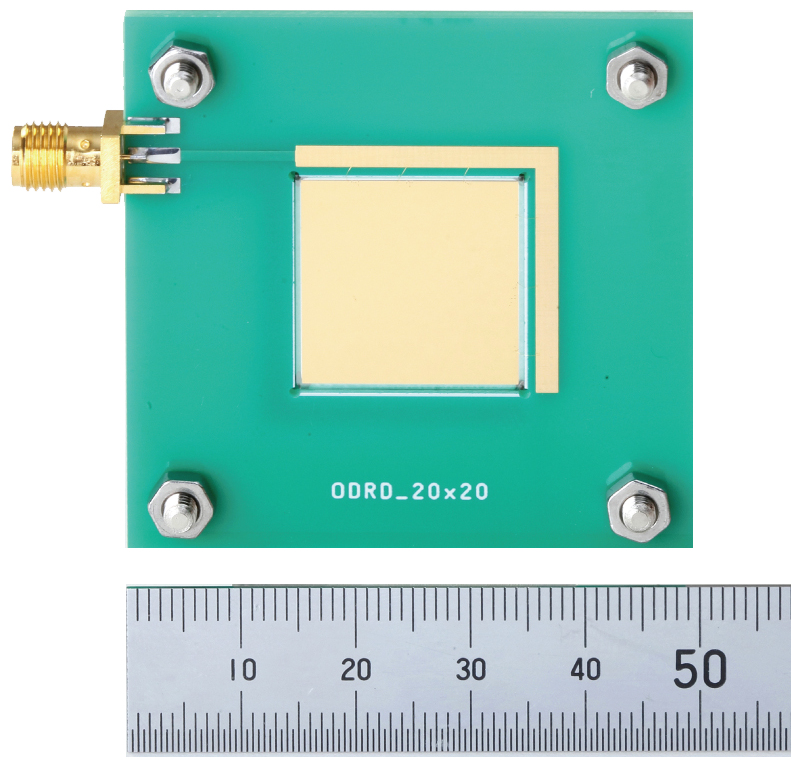Evolutionary: World’s Largest Class Single Crystal Diamond Radiation Detector Opening new possibilities for medical and scientific field

Orbray Co., Ltd., has successfully developed a radiation detector utilizing its proprietary high-quality, large-diameter single-crystal diamond technology. The remarkable physical properties of diamond, including radiation hardness, allow Orbray’s diamond-based radiation detector to function in high-radiation environments where conventional detectors made from other materials would degrade. In addition, the composition of diamond is closely equivalent to that of biological tissue, making it particularly well-suited for medical applications such as radiation diagnostics and therapy. Leveraging these advantages, Orbray has demonstrated that its diamond-based detector can achieve high-precision measurements across a wide range of radiation types—from low-energy diagnostic X-rays to high-energy therapeutic X-rays.
Diamonds have ideal physical properties for radiation detection, including high thermal and chemical stability and fast response time. Additionally, diamond is well suited to measuring the radiation dose absorbed by the human body, as diamond is composed of carbon, with an atomic number of six, making it particularly closely equivalent to that of biological tissue*1. Due to these characteristics, diamonds have been widely studied as radiation detectors in fields such as nuclear engineering, nuclear fusion, high-energy physics, and radiation therapy. Until the 1990s, research relied on selected natural diamonds, but since the 2000s, advancements in chemical vapor deposition (CVD) technology have enabled the synthesis of high-purity diamond, significantly improving detector performance. Single-crystal CVD diamond, produced through the homoepitaxial growth method*2, offers high sensitivity and excellent spectral characteristics. Polycrystalline CVD diamonds with larger detection areas have been used for high sensitivity. However, it exhibits lower sensitivity and inferior spectral characteristics compared to single-crystal diamonds.

In a September 9, 2021, press release*4, Orbray announced the development of a 2-inch diameter high-quality (100) free-standing diamond substrate (product name: KENZAN Diamond™) using its proprietary step-flow growth method*3. Utilizing this breakthrough, Orbray, in collaboration with Tokyo Metropolitan University, Tohoku University, Tohoku Institute of Technology, and Osaka University, developed a diamond radiation detector (Fig. 1). This radiation detector exhibits high sensitivity and excellent spectroscopic characteristics with X-ray systems used in hospitals. Furthermore, the detector can be scaled to a large-area configuration (Fig. 2), enabling ultra-high sensitivity. Orbray will continue product development while conducting user evaluations.

At the Japan Radiology Congress 2025 (JRC), scheduled to take place at Pacifico Yokohama from April 10th to 13th, the diamond manufacturing method and evaluation results of the detectors will be presented. In addition, Orbray plans to exhibit the actual radiation detectors at the International Technical Exhibition of Medical Imaging (ITEM) 2025, which will be held alongside the congress.
Publications related to research results
April 10~13, 2025: Japan Radiology Congress 2025
April 12, 2025: Charge Collection Characteristics of Heteroepitaxial Diamond Solid-State Ionization Chambers in the Diagnostic X-Ray Region. Tokyo Metropolitan University, Prof. Shinsho Kiyomitsu.
April 13, 2025: The Cutting Edge and Future of Lab-Grown Diamond, Orbray Co. Ltd., SeongWoo Kim.
April 13, 2025: The promise of large-diameter diamond detectors. Tohoku University, Prof. Hitomi Keitaro.
April 10~13, 2025, ITEM 2025, diamond radiation detector on display
<Glossary>
*1 Suited for use with biological tissue
Diamond is composed of carbon (atomic number 6), closely equivalent to the average atomic weight of biological tissue (7.2–7.4). This similarity allows for accurate radiation dose measurement for living organisms. Currently, semiconductor radiation detectors use silicon (atomic number 14) or germanium (atomic number 32). However, diamond’s biological equivalence makes it a promising alternative for precise radiation measurement.
*2 Homoepitaxial growth method
Technique for growing diamond crystals on a diamond seed. Expanding the surface area beyond the size of the original seed is extremely difficult using this method. In contrast, the heteroepitaxial growth method involves growing diamond on non-diamond seed material. This approach allows for the production of large-diameter diamond by using large-diameter seed materials.
*3 Step-flow growth method
A crystal growth technique that utilizes a substrate with a slightly inclined surface, forming a stepped structure at the atomic level, to facilitate the growth of diamond.
*4 Press release
Success in mass production technology for ultra-high-purity 2-inch diamond wafer; expected to spur realization of quantum computing
https://orbray.com/magazine_en/archives/1401
| About Orbray Co., Ltd. Head Office: 3-8-22 Shinden, Adachi-ku, Tokyo, Japan Established: August 28, 1953 Capital: 100,000,000 JPY Employees: 1000 (January 1, 2025) Founded in 1939 as a manufacturer of precision jewels for bearings used in electricity meters. Through our core technology of Cutting, Grinding, and Polishing, we fuse state-of-the-art technology with master craftsmanship to produce precision jewel parts that are ahead of their time. Currently, we produce precision jewel parts, small DC motors, medical equipment, and other high-tech products. https://www.orbray.com/ |
| 【Contact us regarding this press release】 Orbray Co., Ltd., Diamond Sales Division Substrate Sales Team TEL:+81-3-3919-0101 |


